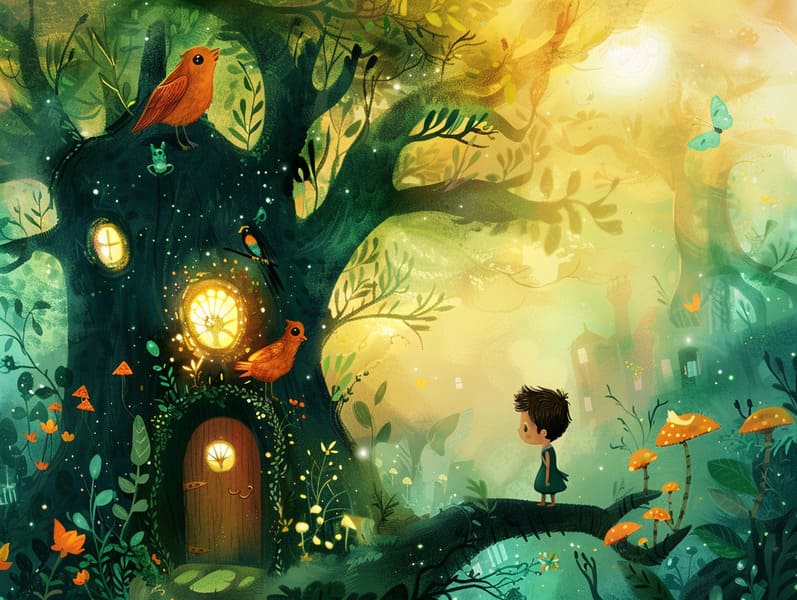The Evolution of Mythical Fairy Tales with Their Perpetual Splendor.
The Evolution of Mythical Fairy Tales with Their Perpetual Splendor.
Blog Article

Famous fairy tales have timeless appeal. These stories have been passed down from one generation to the next well before they were ever documented. They developed from a variety of cultures, including Middle Eastern traditions. They were initially shared among elders, often carrying themes and messages concerning the societal norms and beliefs of the time.
The renowned Brothers Grimm, the two Grimm brothers, were among the first to collect and release many of these beloved fairy tales. Their collection, "Grimm's Story Collection," included narratives like "Cinderella," "The Story of Hansel and Gretel," and "Snow White," which have since become pillars in the world of famous fairy tales. Similarly, H. C. Andersen's whimsical stories, such as "The Sea Maid," and "The Duckling that Could," have stolen hearts worldwide, cementing their place in the pantheon of famous fairy tales.
Though they are centuries old, these stories remain as meaningful as ever, especially as nighttime stories for kids. These whimsical stories are now available in multiple formats, including vibrantly illustrated books, enchanting animations, and internet fairy tales.
Their continued relevance can be linked to several enchanting factors:
Valuable Lessons: Ancient fairy tales often illustrate important moral lessons. Tales like "The Boy Who Cried Wolf" teach the merit of being truthful, while "The Tale of the Tortoise and the Hare" stress the benefits of steadfastness and modesty. These tales offer the young clear distinctions between good and bad, building their moral compass in a gentle yet significant way.
Compassion and Knowledge: Ancient fairy tales frequently involve figures facing obstacles and hardships, provoking readers to understand with their struggles and rally behind their triumphs. For instance, "Beauty and the Beast" points out the virtue of appreciating inner worth to know the inner core of a soul, nurturing perception and recognition.
Cultural Appreciation: Many classic fairy tales are rooted in the cultural contexts from which they were born. Discovering these fairy tales can provide informative snapshots into different heritages, encouraging a sense of world awareness and acknowledgment.
Imagination and Innovation: The fanciful elements in traditional fairy tales—enchanted objects—fire up children’s inventiveness. These tales bring readers to enchanted realms, provoking fantasy dreams and a sense of marvel that endures a lifetime.
Ancient fairy tales are not only fantastical but also illuminating. They function as fantastical tools in promoting various mental and emotional abilities in young readers. When fairy tales are narrated, they enhance language acquisition by offering new phrases and intricate sentence structures. This practice also cultivates listening abilities and mindfulness, as the young follow the story, anticipating to see what happens next.
Furthermore, contemplating the themes and characters of old fairy tales can sharpen cognitive skills and thought processes. Kids are taught to find patterns, expect results, and awesome site get cause and effect. These contemplations also encourage kids reveal their thoughts and feelings, strengthening their emotional intelligence.
In today’s online age, the accessibility of internet fairy tales has made these narratives more accessible than ever. Websites and online apps share extensive collections of old fairy tales that can be perused or listened on anytime, anywhere. Fairy tales narrated are particularly widespread, supplying an delightful method for children to relish these spellbinding stories. Audio stories and read-out-loud stories take characters and settings to life, often supplemented by bewitching background sounds and instrumentals that heighten the narrative journey.
The persistent attraction of classic fairy tales lies in their ability to adapt to present days while retaining their main lessons. Contemporary adaptations of these tales often spotlight more representative characters and modern settings, making them relatable to today’s audience. However, the underlying themes of bravery, charity, and lawfulness remain unchanged, continuing to impact young readers of all ages.
Traditional fairy tales also offer a sense of calm and familiarity. They make accessible a ordered narrative with a evident beginning, middle, and end, often winding up with the culmination of conflicts and the triumph of truth over falsehood. This dependability can be easing for children, introducing a sense of consistency in an unstable world.
Timeless fairy tales continue to bewitch and instruct new generations, maintaining their fascination and importance in modern society. As kids' bedtime tales, they afford a perfect blend of charm and understanding, promoting moral values, empathy, and creativity. The availability of online fairy tales and the prevalence of fairy tales read aloud secure that these timeless narratives remain within reach to new generations.
By continuing and spreading these tales, we continue to cherish the rich tapestry of myths and cultural heritage. Whether you are viewing a vividly illustrated book, seeing a digital library, or listening through an sound book, the majesty of famous fairy tales is always within reach. These narratives remind us of the endless ability of fairy tales and its ability to unify us across time and space.
Regardless if you are experiencing a colorful picture book, perusing a digital library, or playing an audiobook, the grace of ancient fairy tales is always within reach.
These narratives show us of the unfading power of narratives and its ability to hold us together across eras and regions, forging a link that fascinates and enlightens alike.